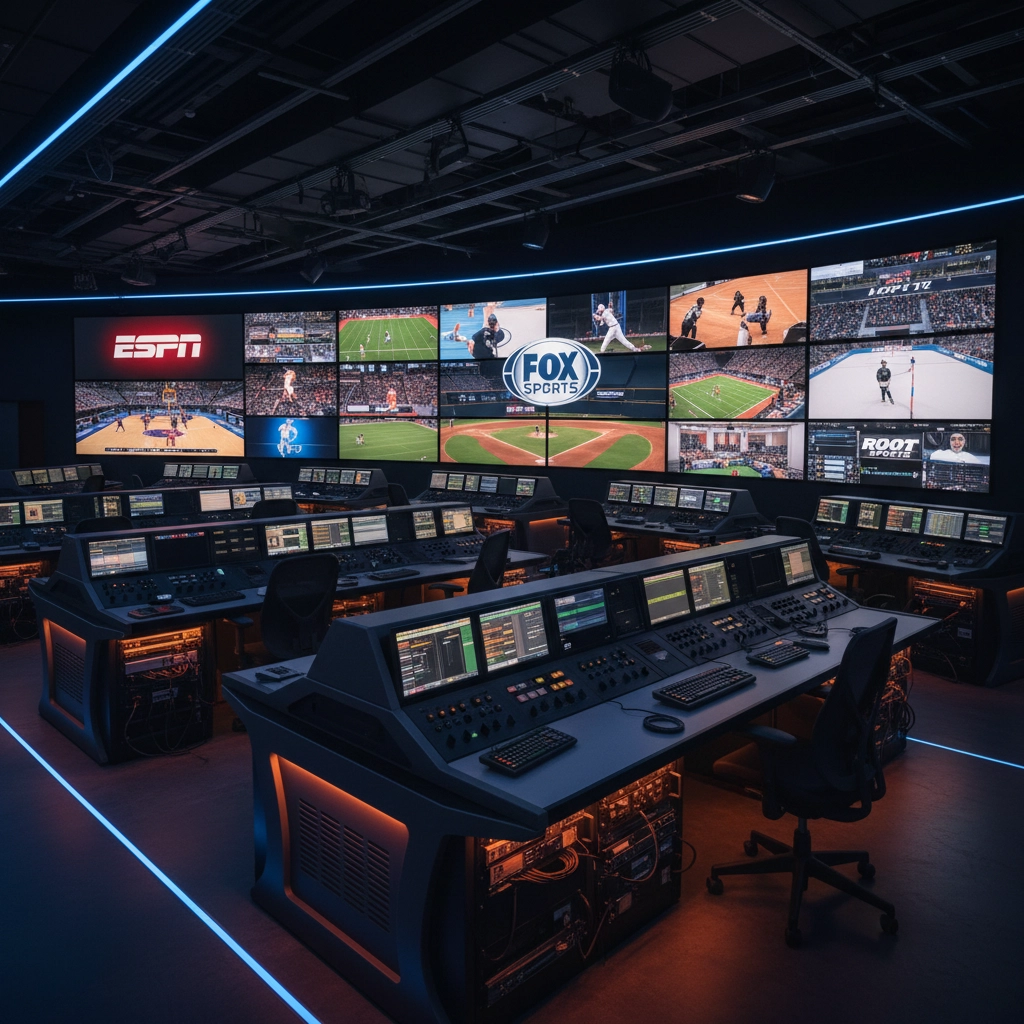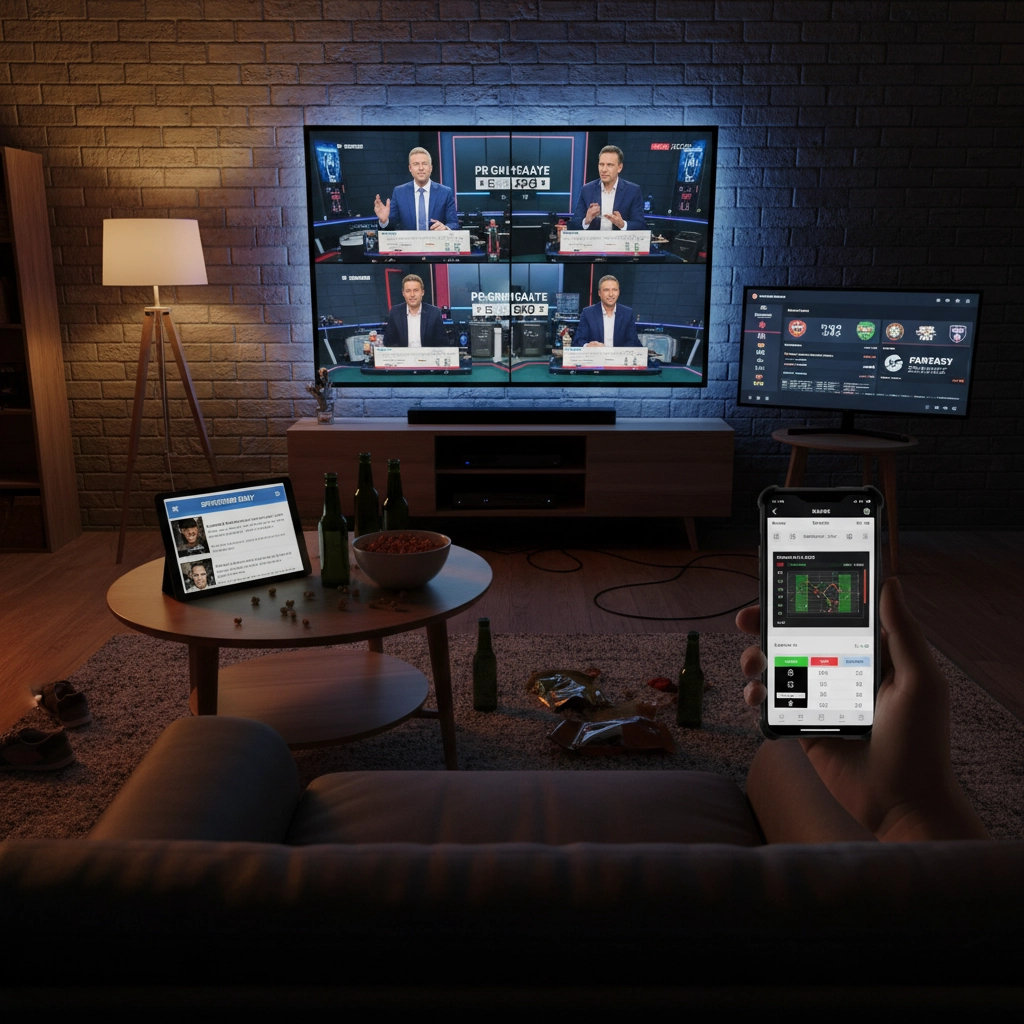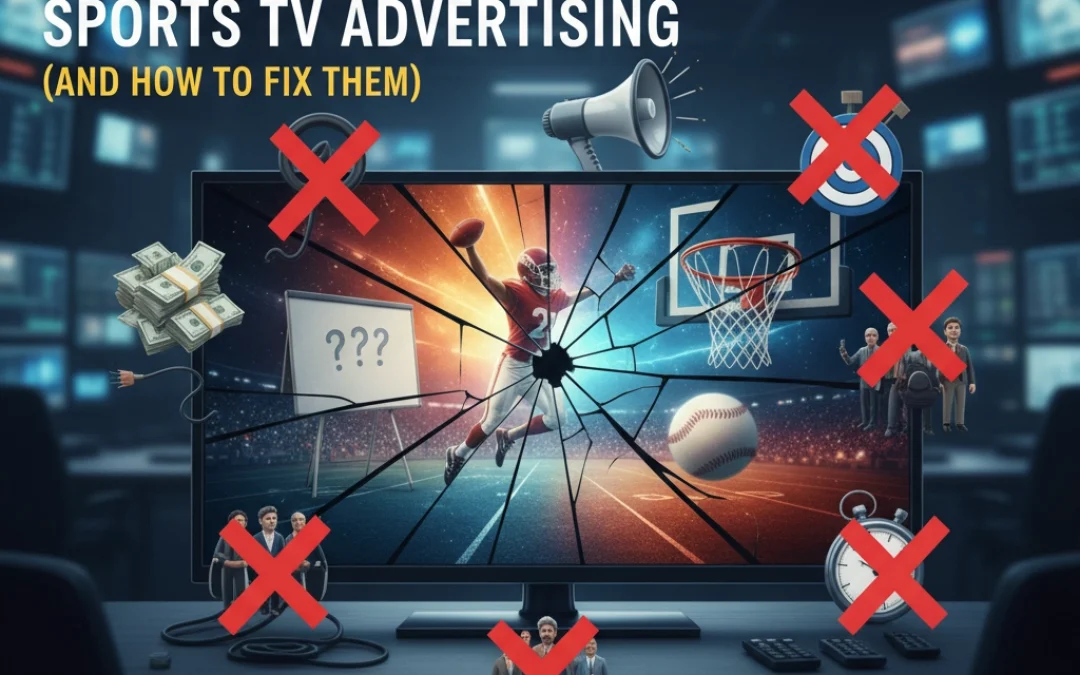Sports TV advertising isn't what it used to be. Today's landscape spans from traditional television broadcasts to digital streaming platforms, reaching fans wherever they consume content: at home on their couch, in the stadium on their phones, or streaming on their computers during lunch breaks. Yet many advertisers still approach sports advertising with outdated strategies that waste budget and miss opportunities.
You're competing for attention in an environment where 97% of sports programming runs on cable networks, not major broadcast channels. Sports fans consume content across multiple touchpoints, and successful campaigns must account for this reality. The mistakes outlined below cost advertisers millions annually in missed opportunities and inefficient spending.
Mistake #1: Assuming Network TV Is Your Only Option
Most advertisers believe they need to advertise during prime network games to reach sports audiences effectively. This misconception drives up costs while limiting reach potential.
Here's the reality: 97% of all sports programming actually runs on cable networks. While everyone fights for expensive spots during Sunday Night Football, you're missing vast audiences watching ESPN, Fox Sports 1, and regional sports networks at fraction of the cost.
The fix: Diversify your sports media strategy beyond marquee network games. Cable sports programming delivers highly engaged audiences with less competition for ad inventory. Regional sports networks particularly offer excellent targeting opportunities for local businesses and brands seeking specific geographic reach.
Consider cable sports programming as your foundation, not your fallback option. You'll achieve better cost efficiency while reaching audiences just as passionate about sports content.

Mistake #2: Ignoring "Game Around the Game" Programming
You're missing two-thirds of available sports content if you only focus on live games. Sports fans don't just watch the action: they consume everything surrounding it.
Pre-game shows, post-game analysis, sports talk radio, and commentary programs account for over one-third of all cable sports viewing. During major events like the NBA Finals, 68% of viewers who tune into ESPN before or after the main event also watch the actual game.
The fix: Expand your advertising to include sports news, analysis shows, and commentary programming. These slots often cost significantly less than live game inventory while reaching much of the same audience. Sports talk shows particularly offer opportunities for longer-form advertising integration and sponsorship opportunities.
Map out the entire sports content ecosystem around your target events, not just the games themselves. This approach dramatically expands your available inventory while maintaining audience quality.
Mistake #3: Launching Campaigns Without Clear Objectives
Too many sports advertising campaigns launch without specific, measurable objectives. Without knowing whether you're prioritizing brand awareness, direct sales, attendance, or lead generation, your messaging becomes unfocused and unmeasurable.
Generic objectives like "increase visibility" or "reach sports fans" provide no foundation for creative development or performance measurement. You can't optimize what you can't measure clearly.
The fix: Define one primary objective before developing creative or purchasing media. Are you driving immediate revenue, building long-term brand awareness, or generating leads for future conversion? While these goals aren't mutually exclusive, prioritizing them shapes everything from creative messaging to channel selection.
Create specific, measurable goals tied to business outcomes. Instead of "increase brand awareness," target "achieve 15% unaided brand recall among target demographic within 90 days." This specificity guides both creative development and media planning decisions.

Mistake #4: Using One-Size-Fits-All Audience Targeting
Sports fans aren't a monolithic group, yet many advertisers treat them as such. A 25-year-old fantasy football enthusiast consumes content differently than a 55-year-old NASCAR fan. Generic messaging rarely resonates effectively with anyone.
Broad targeting wastes budget on irrelevant audiences while missing opportunities to connect deeply with your ideal customers. Different sports attract different demographics, viewing habits, and consumption patterns.
The fix: Develop detailed audience personas based on actual data, not assumptions. Research which sports your target demographic prefers, when they watch, and how they consume content. College football fans behave differently than NBA fans, who behave differently than soccer enthusiasts.
Segment your campaigns by sport, demographic, and consumption pattern. A financial services company might target NFL fans differently than golf viewers, adjusting both creative messaging and media placement accordingly. Use data from platforms like Sportrons.com to understand viewing patterns and preferences more precisely.
Mistake #5: Poor Channel and Time Slot Selection
Choosing wrong channels and broadcasting times can doom well-crafted campaigns. Different channels attract different demographics, and broadcasting times determine who sees your advertisements.
Many advertisers select channels based on name recognition rather than audience alignment. Broadcasting during wrong time slots: when your target audience isn't watching: wastes budget regardless of creative quality.
The fix: Match channel selection with actual audience viewing patterns, not assumptions. Research which channels your target demographic watches and when they're most active. National channels provide broader reach, while regional channels offer more targeted, often more affordable access to local audiences.
Consider both traditional TV viewing and digital consumption patterns. Sports fans increasingly watch content across devices, streaming games on phones while at work or viewing highlights on computers. Your media strategy should account for this multi-platform consumption behavior.

Mistake #6: Overemphasizing Direct Sales Messages
Constantly pushing sales and promotions in sports advertising creates fan fatigue and reduces authenticity. Sports fans value genuine engagement over persistent sales pitches, and overly promotional content can damage long-term brand relationships.
Sports audiences are particularly sensitive to authentic versus manufactured content. They can spot inauthentic messaging immediately and will tune out brands that prioritize selling over community engagement.
The fix: Balance promotional content with brand-building and community-focused messaging. Mix sales-driven advertisements with behind-the-scenes content, community involvement stories, and genuine fan engagement initiatives.
Sports advertising works best when it feels like part of the sports experience, not an interruption. Consider sponsorship opportunities, athlete partnerships, or community involvement that creates positive brand associations beyond direct product promotion.
Focus on building relationships first, sales second. This approach creates stronger long-term customer value and more sustainable advertising effectiveness.
Mistake #7: Confusing Quantity with Quality
Broadcasting more advertisements doesn't automatically improve campaign performance. Many advertisers believe higher ad frequency equals better results, leading to poor placement decisions and budget waste.
A campaign with 100 spots on poorly targeted channels often delivers lower gross rating points than 20 strategically placed advertisements on channels that properly cover your target audience. Raw spot count means nothing without proper targeting.
The fix: Focus on gross rating point efficiency rather than total advertisement count. Evaluate campaigns based on cost per GRP and audience coverage quality, not volume metrics.
Analyze your GRP costs to identify most cost-effective placements delivering strongest audience coverage within your target demographic. Strategic placement often outperforms high-volume campaigns with poor targeting.
Quality targeting beats quantity every time. Better to reach your ideal audience three times effectively than reach random viewers ten times unsuccessfully.

Moving Forward With Smarter Sports Advertising
Sports TV advertising success requires understanding that today's sports fans consume content across multiple platforms and touchpoints. They watch games at home, check scores on phones, stream highlights on computers, and engage with sports content throughout their day.
Your advertising strategy must account for this multi-platform reality while avoiding the common mistakes that waste budget and miss opportunities. Focus on strategic placement over volume, authentic engagement over constant selling, and precise targeting over broad reach.
The integration opportunities through platforms like Sportrons.com provide additional touchpoints for reaching sports fans in institutional and community settings, expanding your reach beyond traditional broadcast advertising.
Remember: sports fans are passionate, engaged audiences who reward authentic brands that understand their community. Get the fundamentals right: clear objectives, proper targeting, strategic placement: and your sports advertising will deliver measurable results that justify investment.
Start by auditing your current approach against these seven mistakes. Identify which errors you're making, implement the fixes systematically, and watch your sports advertising effectiveness improve dramatically.


Recent Comments